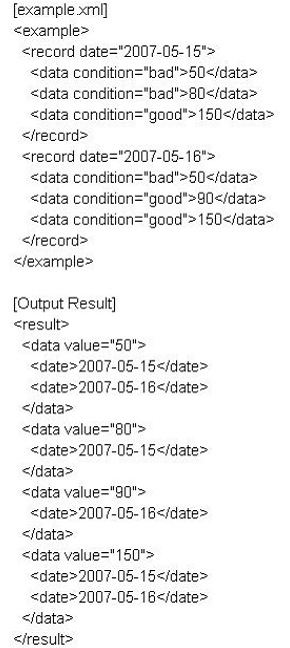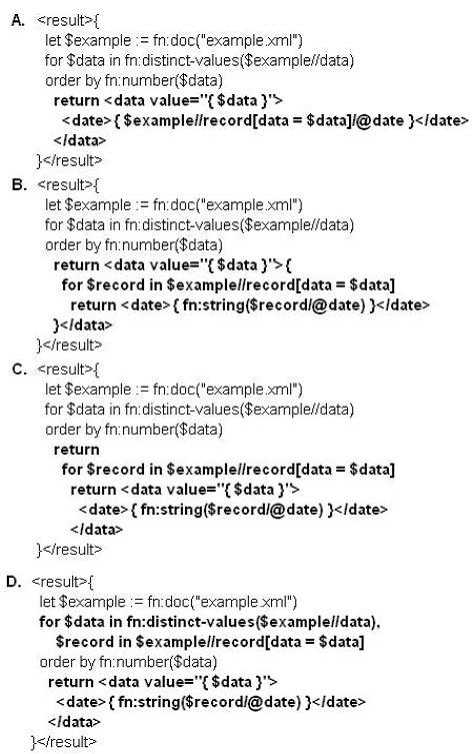Four separate operating requirements and four individual storage management methods for XML document data are listed below. Considering the general characteristics, which individual management method ([Management Methods]) combines most optimally with which requirement ([Operating Requirements])?
[Operating Requirements]
1. Retrieve a portion of the XML document according to values in the XML document
2. Identify the XML document by unique values, and retrieve the entire XML document
3. Perform aggregation and statistical calculations of the values in the XML document
4. Continuously check the data types for the values in the XML document, and search through data using queries on the XML document
[Management Methods]
A) XML document file (text file) management via file system
B) Management via RDB (relational database), and program for storing data from an XML document into the RDB (assume the RDB does not maintain an XML document tree structure)
C) Management via XMLDB, using XML Schema definitions
D) Management via XMLDB, without using XML Schema definitions
Show Answer
Hide Answer






